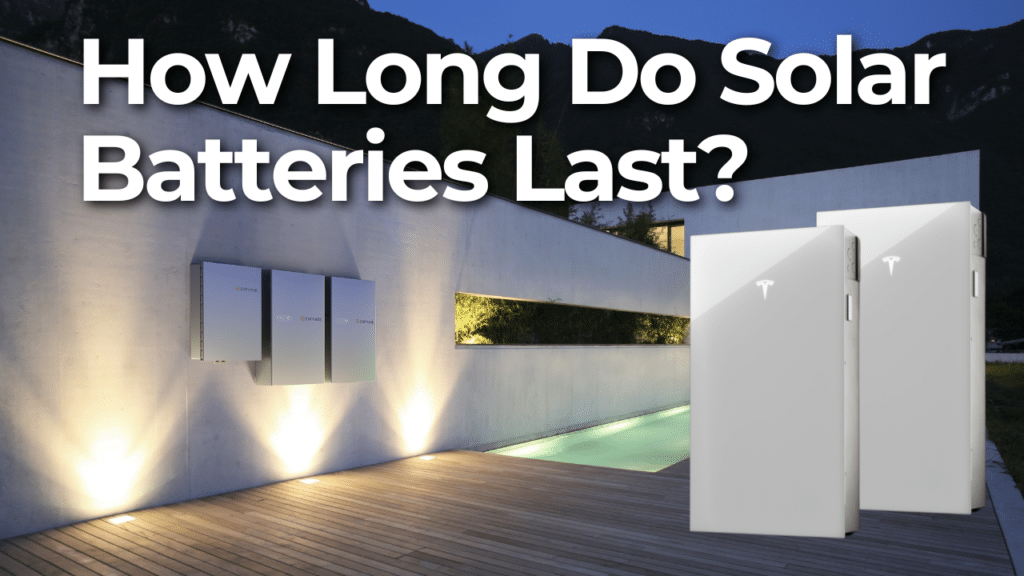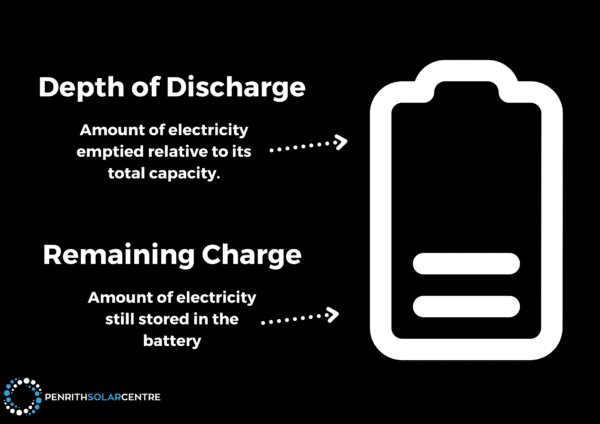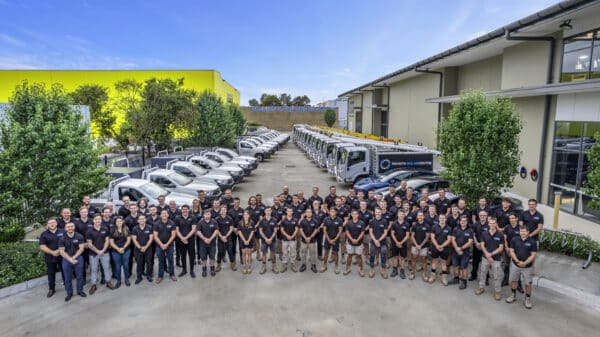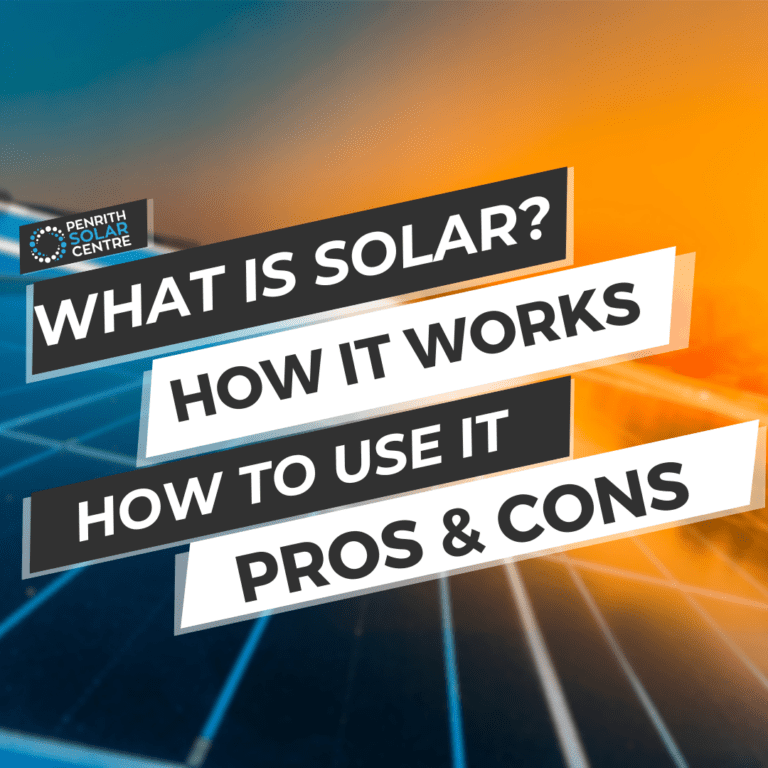
Solar batteries are a critical part of modern solar energy systems. They store the energy your solar panels produce during the day. You’ll be able to use it at night, during cloudy weather, or even as backup power during blackouts. But like any technology, they don’t last forever.
At Penrith Solar Centre, we know a thing or two about solar batteries. We ought to. We install them every day of the week (except Sundays, even we need a bit of a rest). Several factors influence the lifespan of solar batteries. Battery performance depends on variables like charging habits, temperature, and the quality of the battery itself.
In this article, you’ll learn about the following:
- What Determines the Lifespan of a Solar Battery?
- How to Extend the Lifespan of Your Solar Battery
- Signs Your Solar Battery Is Wearing Out
- How Much Does It Cost to Replace a Solar Battery?
By the end of this article, you’ll know what to expect from your solar battery and how to keep it running efficiently for years to come.
What Determines the Lifespan of a Solar Battery?
Several factors influence how long a solar battery lasts. Understanding them will help you make the most of your battery. This will also help avoid unnecessary wear and tear.
Please Note: solar batteries naturally degrade over time. Most warranties for solar batteries cover 10 years, with the rare exception of some lasting as long as 15 years. At the end of the warranted period, the battery will still function. It just doesn’t have the capacity it had at the start.
Most solar batteries end up around 60 – 70% storage capacity at the end of their warranted period. They will last even longer if properly maintained. The lifespan depends on the quality of the battery, how it’s used, and how well it’s cared for.
Many battery warranties cover a set number of years or a set number of charge cycles, whichever comes first. For example, the warranty for the Enphase IQ Batteries is 15 years or 6,000 cycles if the battery is used within its recommended parameters.
Warranties are helpful guidelines only. The actual lifespan of your battery could be longer or shorter depending on factors like depth of discharge, environmental conditions, and charge cycles.
Depth of Discharge (DoD)
Depth of Discharge (DoD) refers to the percentage of a battery’s capacity that is used before it recharges. For example, if you use half of the battery’s capacity before recharging, the DoD is 50%.

When you drain the battery beyond its recommended DoD, it will wear out faster. Frequently draining the battery to its maximum DoD will have the same effect.
Manufacturers design solar batteries to handle a certain DoD without harming their lifespan. Many new solar batteries support a DoD of up to 80% or higher. This means you can use most of their stored energy without worrying about damage.
Charge Cycles
Solar batteries have a certain number of charge/discharge cycles. A cycle is one full charge and discharge.
Small discharges are added together to calculate the number of full discharges.
Most solar batteries last for several thousand cycles. That’s up to 10 years of use under typical conditions.
Energy Throughput
Energy throughput is the total amount of energy a battery is expected to charge and discharge over its lifetime. It’s a less digestible figure than counting up years in a warranty, so manufacturers don’t use it as often. It’s usually included in the fine print though.
It’s important to look for the energy throughput of your battery warranty and understand how it works. For example, if a battery manufacturer provides a throughput warranty of 30MWh, this means the warranty is valid until the battery stores and delivers 30MWh of energy.
It’s kind of like the “km travelled” warranty condition for cars.
For Powerwall 3, the warranted throughput is 37.8MWh. This figure is important when connecting to a VPP. That increases the number of charge and discharge cycles.
Please keep in mind: the more cycles a battery goes through, the more its capacity will degrade over time.
Temperature and Environmental Conditions
Solar batteries perform best within a specific temperature range. This range is usually between 10°C and 30°C. Extreme heat or cold can cause the battery to degrade faster and lose efficiency.
While that’s the best operating window, batteries such as the Tesla Powerwall 3 can operate between -20°C to 50°C.
If you live in an area with extreme temperatures, you might want to consider installing the battery in a climate-controlled space. Somewhere like a garage or a sheltered, shady spot on the side of the house.
If you’re interested in learning a bit more about installing a Powerwall outside, you might want to check out the following article titled, Can You Install a Tesla Powerwall 3 Outside?
How to Extend the Lifespan of Your Solar Battery
Proper usage and care can extend the life of your solar battery. In some cases, by quite a bit. Here are some practical tips to get the most out of your investment. We’ve already touched on most of them above.
Use Smart Monitoring Tools: Solar batteries come with an app or software that allow you to monitor your battery’s performance. Use these tools to track charge cycles, energy usage, and overall health.
Perform Regular Maintenance: Solar batteries are very low maintenance. If you want to optimise your battery, check the battery periodically to make sure everything is clean. Make sure the ventilation areas are clear of debris.
Follow Manufacturer Guidelines: Always use your battery according to the manufacturer’s instructions. They will vary from battery to battery.
Keep It Within the Recommended Temperature Range: As we mentioned, avoid exposing your battery to extreme heat or cold. Installing it in a shaded or climate-controlled area will help maintain the best performance. It will, however, work in more extreme temperature ranges.
Avoid Frequent Deep Discharges: Try to keep the battery’s Depth of Discharge within the manufacturer’s recommendations. Regularly draining the battery below its recommended DoD can shorten its lifespan.
If you’re interested in learning a bit more about the importance of monitoring and programming your energy, you might want to check out the following article titled, What is Consumption Monitoring?
Ready to go solar? Click here.
Signs Your Solar Battery Is Wearing Out
Even with proper care, all solar batteries will eventually show signs of wear. Recognising these signs early can help you prepare for a replacement.
Reduced Capacity
One of the most noticeable signs of an aging solar battery is a decline in its storage capacity. Over time, the battery will hold less energy than it did when it was new.
For example, a battery that originally stored enough energy for six hours of use might only provide four hours towards the end of its warranty period.
Slower Recharge Times
If your solar battery takes longer to recharge than it used to, this is also a sign that its efficiency is decreasing. Batteries lose their ability to absorb energy quickly as they age. Again, this is completely normal.
Increased Reliance on the Grid
A deteriorating battery may struggle to supply enough power to meet your home’s needs. This will force your system to rely more and more on the grid. We hate this.
If you notice a spike in your energy bills, it could be a sign that your battery is nearing the end of its lifespan. Keep an eye on those bills.
Physical Signs of Wear
This one is uncommon: physical damage like bulging, leaks, or corrosion around the battery terminals indicates a problem. If you notice any of these issues, contact a professional immediately for an inspection.
If you’re interested in learning a bit more about the warranties for the products we install, you might want to check out the following article titled, A Complete Guide to Solar Warranties.
How Much Does It Cost to Replace a Solar Battery?
Well, the answer to this question is that it depends. Replacing a solar battery can be a significant investment. The cost depends on several factors, including the battery’s capacity and the brand.
The good news is that battery prices have been steadily decreasing as the technology becomes more widespread.
Average Replacement Costs
For a standard-sized battery (10kWh), replacement costs can range wildly; from as low as $8,000 to over $15,000. Larger-capacity batteries or premium brands will cost more.
Balancing Cost and Value
When deciding whether to replace your solar battery, look at its overall value. A new battery can:
- Restore your solar system’s efficiency.
- Increase your energy independence.
- Reduce reliance on the grid.
If you’re planning to stay in your home for many years, investing in a replacement battery will pay off in the long run.
If you’d like to learn more about the price of a Powerwall 3, you might want to check out the following article titled, How Much Does a Tesla Powerwall 3 Cost?
Click here for sunshine savings.
Solar Batteries Will Keep You Dancing in the Spark
Solar batteries are built to last, with most offering reliable performance for 10 years or more when properly maintained. Their longevity depends on factors like charging habits and environmental conditions. By following best practices, you can maximise the lifespan of your battery and enjoy the benefits of energy independence for years to come.
At Penrith Solar Centre, we install batteries every day (except Sundays, remember?). We know that by investing in the right system and caring for it properly, you can get a lot of performance and value out of it. We’re here to help you do that. It’s what we do.

If you’re interested in learning a bit more about the battery market, you might want to check out the following article titled, Best Home Solar Batteries for 2025.










